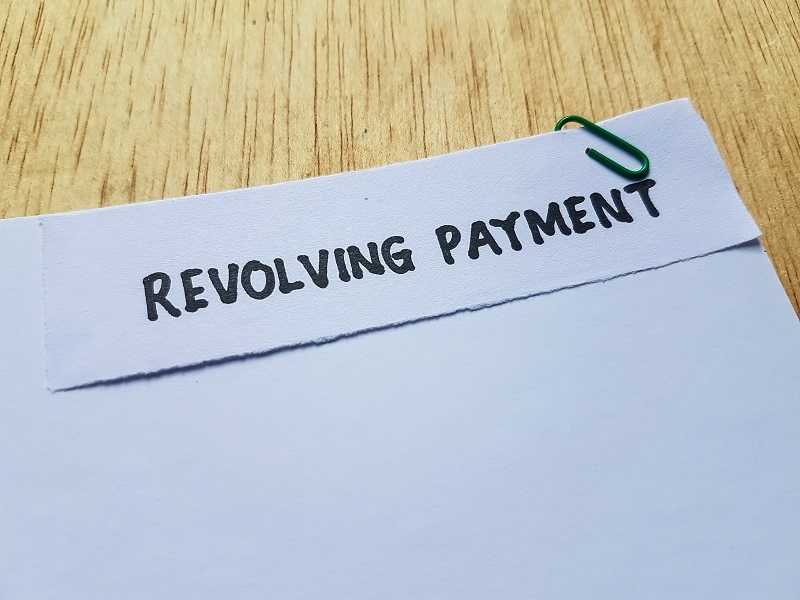
Where personal financing is involved, perhaps one of the largest distinctions to understand is revolving vs installment debt. Both borrowings work differently, impact your credit in different ways, and have various modes of repayment. Whether you're dealing with credit cards, considering a personal loan, or looking to save on additional spending, it's important to know how these debts work.
This entry examines credit card vs loan debt explained simply, presents real examples of revolving debt, outlines installment loan basics, and addresses both payback strategies and lifestyle changes—such as reducing commuting expenses or implementing automobile upkeep cash-saving tips—that can free cash to allow you to be debt-free earlier.
Revolving debt is credit that continues to renew itself while you pay it back. The most common revolving debt types are home equity lines of credit and credit cards. Suppose you have a credit card with a $5,000 limit. If you use $1,000, you have $4,000 left to spend. Once you pay the $1,000 back, your available credit becomes $5,000 again.
Its flexibility makes revolving debt convenient to employ, but with disadvantages. Interest charges are generally higher, and there is a temptation to carry balances month to month at a dear cost. More importantly, however, is understanding how revolving debt affects credit. It directly influences your credit utilization ratio, which weighs heavily in your total credit score.
Installment debt works differently. When you have an installment loan, you borrow money in a large sum at one time and repay it in fixed monthly payments until the account is satisfied. Common installment loan basics are mortgages, auto loans, student loans, and personal loans.
For example, when you take a three-year loan of $10,000, you pay the same amount of money each month until the loan is fully repaid. Once the balance is zero, the account typically ends. With revolving debt, you can't reuse the credit. This structure offers certainty and enables the borrower to budget for fixed payments.
Flexibility is the hallmark feature of revolving debt. You borrow, repay, and borrow again up to the credit limit. Installment loans are not so, and you have to adhere to a set schedule until the debt is settled. The amount paid also changes. For revolving debt, your minimum payment would fluctuate based on your balance, whereas installment loans provide the stability of fixed payments.
Interest rates draw out another difference. Revolving debt, such as credit cards, tends to have significantly higher rates than installment loans. Loans tend to be more costly for long-term funding.
Lastly, the credit effect differs. Revolving debt usage considerably affects your credit score, whereas installment loans diversify your credit mix and show long-term responsibility.
The most common form of revolving debt is credit cards, while personal loans or auto loans make up installment debt. The credit card vs loan debt explanation tells you how to choose between the two.
The bottom line is that credit cards are ideal for convenience and rewards, while loans are smarter for stability and long-term affordability.
Your credit report is very sensitive to your management of revolving accounts. High utilization—utilizing too much of the accessible line of credit—will lower your score. Specialists recommend remaining below 30 percent utilization of available credit.
Payment history is also significant. Missing a payment on a credit card will significantly damage your score. Additionally, the age of your revolving accounts is significant. Longer accounts increase your average credit age, which lenders view as a sign of stability.
For example, if your credit limit is $5,000 and you have a balance of $4,000, your utilization rate is 80 percent. While paying on time, this much usage can negatively affect your score.
Succinct repayment of installment loans saves one money as well as time. Given below are some installment debt repayment tipshacks that newbies can apply.

Not only is handling revolving vs installment debt more about payment methods—but releasing dollars in your daily life. Commuting and car maintenance are two categories most Americans overspend on.
Commuting reduction can have a significant impact. Carpooling with co-workers, riding public transit, or negotiating hybrid work options all save money. For shorter distances, biking or walking not only saves money but also promotes improved health.
Having a car has ongoing expenses, but wise habits keep them in line. Listening to car maintenance cost-saving tips, such as oil changes, tire rotation, and checking tire pressure, increases efficiency and prevents costly repairs. Comparing service quotes and understanding basic do-it-yourself tasks, including changing filters or wiper blades, saves hundreds annually. These lifestyle savings are extra cash flow that can be directly applied to paying debt.
The structure of debt impacts behavior. Revolving debt is less tangible due to the small monthly payments and fluctuating balances. Consumers are trapped in spending cycles and repayment cycles. Installment debt is more tangible. There is a defined loan amount, payments are set, and there is a terminating point. For some, this discipline motivates continued repayment. Discovering your own spending habits can help you choose what type of borrowing works for your lifestyle.
Charging up daily needs on credit cards if you are unable to pay them in your budget is a red flag. It takes the habit of rolling over into huge balances. Using an installment loan to pay off such high-interest balances is a good decision that keeps money in your pocket in interest and also simplifies making the payments.
Another red flag is not paying attention to how revolving debt impacts credit. Maxing out credit cards hurts your utilization ratio. A better strategy is to keep balances low and pay them off in full when possible.
Knowing revolving vs installment debt is a building block for financial literacy. Revolving debt is not fixed but potentially harms your credit and budget if misused. Installment loans are fixed and predictable but have long-term commitment.
Having a knowledge of the difference, employing installment debt paying tips, and applying real-life life adaptations such as reducing car-commute expenses and employing car maintenance saving tips, you are more firmly planted in debt management.
Having credit card vs loan debt in the back of your mind the next time around will enable you to make the best possible choice that suits you financially without the costs getting out of hand.
This content was created by AI